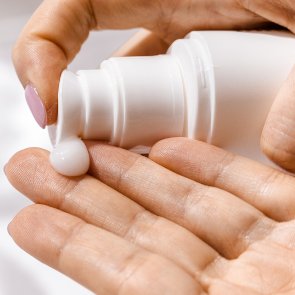5 Dos and Don’ts of Taking Care of Dry Skin
 There are two kinds of dry skin: naturally dry skin produces less oil than normal, whereas dehydrated skin has been stripped of moisture and oil by external factors, such as aggressive skincare products, dry air, etc. Regardless of the underlying cause of dry skin, it needs special care. Here are 5 dos and don’ts of taking care of dry skin.
There are two kinds of dry skin: naturally dry skin produces less oil than normal, whereas dehydrated skin has been stripped of moisture and oil by external factors, such as aggressive skincare products, dry air, etc. Regardless of the underlying cause of dry skin, it needs special care. Here are 5 dos and don’ts of taking care of dry skin.According to studies, many people underestimate the amount of sebum their skin produces and think that their skin is dry when it is in fact normal. Here are four signs that your skin is indeed dry:
Your pores are barely visible, and you have never or almost never suffered from an oily complexion or breakouts.
Your skin often feels tight, especially after washing your face, showering or swimming (although this can be a sign of dehydration or an aggressive facial cleanser/body wash).
Your skin tends to get rough and flaky, especially during the cold months.
Your skin absorbs creams, lotions and oils instantaneously.
If you’ve checked all the boxes on this list, here are a few tips for you.
DO Moisturize Immediately After a Shower or Bath
If you have a habit of wiping your skin dry after showering or bathing, try changing it. Gently pat your skin with a towel to absorb some water (but not all of it) and apply moisturizer right away. Moisturizing creams, lotions, oils and butters have occlusive properties. They will lock in the moisture that’s left on your skin and thus keep your skin hydrated.
Check this out: 5 Ingredients to Avoid in Moisturizers
DO Choose the Right Moisturizer
There are two main types of active ingredients found in moisturizers: humectants that draw moisture to the skin and emollients that seal it in and provide protection from the environment. Dry skin needs moisturizers that contain both types. Look for products whose ingredient list includes lactic acid, hyaluronic acid, urea, fatty acids or vegetable oils, and NMF (natural moisturizing factor). These ingredients effectively moisturize the skin, helping it combat dryness and flaking. And moisturizers with ceramides help maintain the skin’s barrier function. In winter, you’ll need a moisturizer with occlusive ingredients (shea butter, cocoa butter, lanolin, mineral oil, silicones) that will protect your skin from the cold and wind.
Check this out: How to Choose the Right Moisturizer for Dry Skin
DO Buy an Air Humidifier
Dry air in rooms, especially during the heating season, can strip your skin of moisture and worsen its condition. An air humidifier will help maintain the optimum humidity level in the room and prevent skin dehydration. If you spend a lot of time in an office with dry air, you can buy a portable air humidifier and put it on your desk. Mini humidifiers are usually powered by USB, so you won’t even need batteries.
Check this out: 5 Common Causes of Dry Skin
DON’T Wash Your Face With Soap
Soap and facial washes with a high (alkaline) pH value disturb the hydro-lipid balance of the skin, as does too hot or too cold water. If you have dry skin (or any type of skin, really), you should wash your face with a gentle cleanser and lukewarm water. Don’t rub your skin too much while washing and gently pat it dry with a clean towel instead of rubbing vigously.
Check this out: 8 Tips for Washing Your Face Properly
DON’T Wear Clothes Made From Rough Fabrics
Dry skin can affect any part of your body, not just your face. For example, a lot of people have flaky skin in winter, and wearing coarse woolen clothes or clothes made from cheap synthetic fabrics makes thing worse. To give your dry skin some relief, you should wear soft fabrics that breathe, for example, pure cotton. If you absolutely need to wear your favorite thick sweater, put on a soft T-shirt underneath.
Check this out: 5 Natural Products to Soothe Irritated Skin
Breadcrumbs
Filters
- Face, Body
Tags
Related Articles
- 6 Homemade Face Masks With Avocado Oil for Dry Skin, Skin Benefits of Sea Buckthorn, 6 Benefits of Olive Squalane for Your Skin, 6 Tips for Taking Care of Problem Skin